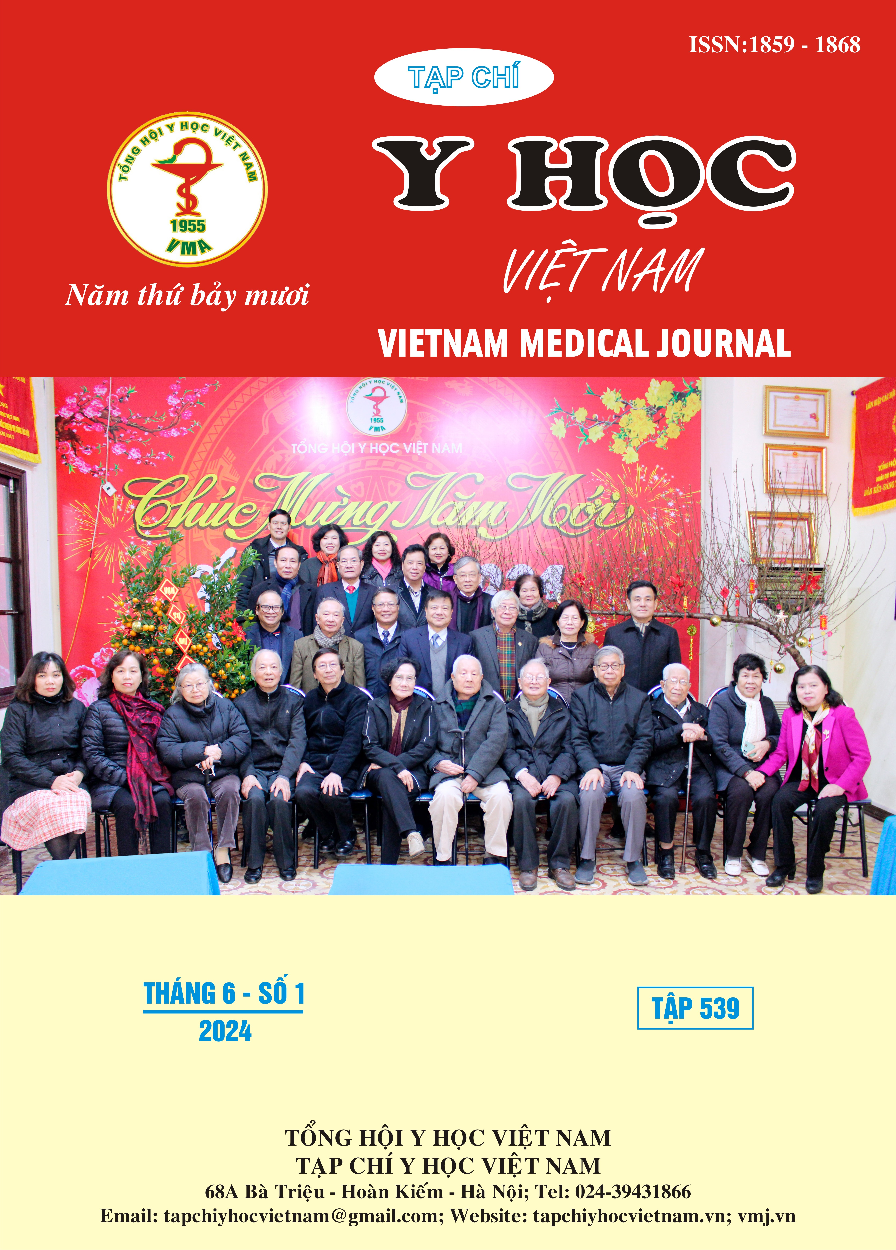SURVEY OF DRUG INTERACTIONS IN PRESCRIPTIONS FOR TYPE 2 DIABETES TREATMENT AT THONG NHAT HOSPITAL IN 2023
Main Article Content
Abstract
Background: Diabetes mellitus is a chronic disease with a complex course that increases the risk of death from chronic diseases worldwide. Drug combination in treatment is inevitable, especially in the presence of multiple diseases and symptoms. Therefore, it is necessary to survey the level of drug interactions in diabetes mellitus treatment prescriptions. Objective: Determine the rate and severity of drug interactions occurring in prescriptions and medical records at Thong Nhat Hospital in 2023. Materials and method: A cross-sectional study based on prescriptions of type 2 diabetes mellitus patients who visited Thong Nhat Hospital from March to August 2023. The severity of drug interactions in the prescriptions was assessed on Medscape and Drugs.com. Results: A survey of 400 medical records recorded that the average age of the survey sample at Thong Nhat Hospital was 73.9 ± 8.5, the female: male ratio was 1.31:1, 96.8% of diabetic patients. Type 2 has at least one comorbidity. Among comorbid diseases, hypertension and dyslipidemia account for the highest rates with 87.3% and 72.5% of patients, respectively. Besides, the majority of patients have a glomerular filtration index above 60 mL/min/1.73 m2, accounting for 67.3%. Regarding diabetes drug interactions, moderate synergistic interactions are the most common type of interaction, accounting for 99.3% of the total interactions. Insulin is the drug with the highest frequency of drug interactions, accounting for 98.6% of all drug interactions. Drug interactions between diabetes drugs and other drugs appear quite commonly such as amlodipine - metformin at a rate of 17.7% of the total prescriptions, followed by drug interactions between losartan - insulin at 14.9% and ibesartan – insulin accounts for 10.6% of total prescriptions.
Article Details
Keywords
diabetes, type 2, Thong Nhat hospital
References
2. N. M. Maruthur et al., "Diabetes medications as monotherapy or metformin-based combination therapy for type 2 diabetes: a systematic review and meta-analysis," (in B), Annals of internal medicine, vol. 164, no. 11, pp. 740-751, 2016.
3. K. Plis, R. Bunescu, C. Marling, J. Shubrook, and F. Schwartz, "A machine learning approach to predicting blood glucose levels for diabetes management," in Workshops at the Twenty-Eighth AAAI conference on artificial intelligence, 2014: Citeseer.
4. J. Kaur, P. Singh, and J. R. Sowers, "Diabetes and cardiovascular diseases," (in B), American journal of therapeutics, vol. 9, no. 6, pp. 510-515, 2002.
5. N. T. A. Thư, P. Đ. Nhật, and T. H. Linh, "Chi phí điều trị nội trú của người bệnh đái tháo đường típ 2 tại Bệnh viện quận 6 Tp.HCM," (in A), Tạp chí Nghiên cứu Y học, vol. 142, no. 6, pp. 119-125, 06/30 2021, doi: 10.52852/ tcncyh.v142i6.198.
6. C. D. Vũ and Q. T. Trần, "Một số yếu tố liên quan đến khởi phát, mức độ nặng và kết quả điều trị nhiễm toan ceton do đái tháo đường type 1 ở trẻ em và vị thành niên," (in A), Tạp chí Y học Việt Nam, vol. 500, no. 1, 2021.
7. S. Manjusha, M. Amit, and S. Ronak, "A study on prescribing pattern and potential drug-drug interactions in type 2 diabetes mellitus inpatients," Indian journal of pharmacy practice, vol. 7, no. 1, 2014.
8. W. L. Bennett et al., "Comparative effectiveness and safety of medications for type 2 diabetes: an update including new drugs and 2-drug combinations," (in B), Annals of internal medicine, vol. 154, no. 9, pp. 602-613, 2011.
9. A. D. Kamal, A. N. Dixon, and S. C. Bain, "Safety and side effects of the insulin analogues," (in B), Expert Opinion on Drug Safety, vol. 5, no. 1, pp. 131-143, 2006.
10. A. J. Scheen, "Clinical pharmacokinetics of metformin," (in B), Clinical pharmacokinetics, vol. 30, pp. 359-371, 1996.


